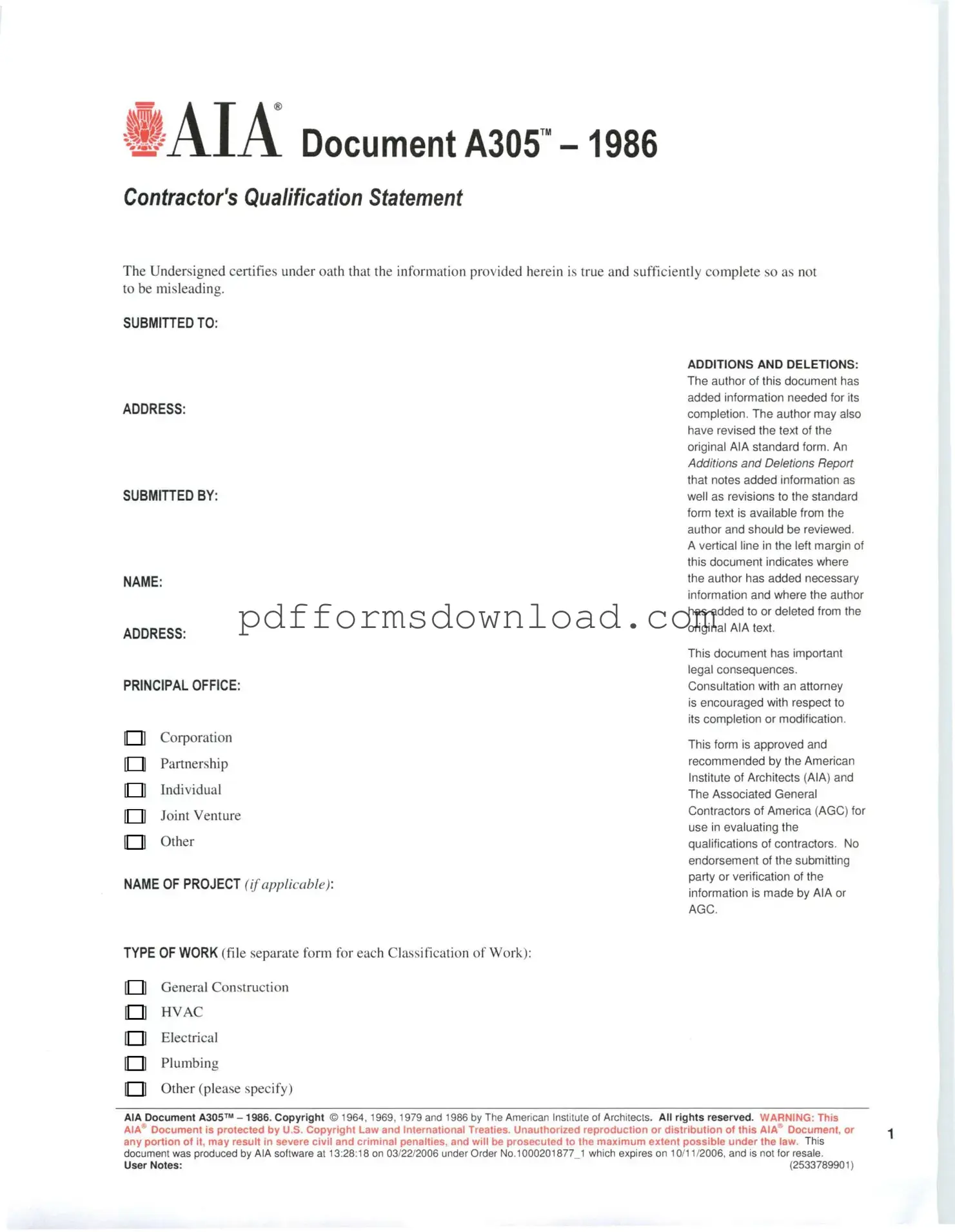What is the AIA A305 form?
The AIA A305 form, also known as the Contractor's Qualification Statement, is a document used by contractors to provide information about their qualifications and experience. It serves as a means for project owners or general contractors to assess the capabilities of potential subcontractors or contractors before awarding a contract. This form includes details about the contractor’s financial status, experience with similar projects, and references.
Who typically uses the AIA A305 form?
The AIA A305 form is primarily used by contractors seeking to establish their qualifications to potential clients. It is often required by project owners, general contractors, and construction managers during the bidding process. By using this form, these parties can evaluate the contractor’s experience, financial stability, and overall suitability for the project at hand.
What information is included in the AIA A305 form?
The AIA A305 form includes several key sections. These sections typically cover the contractor’s business structure, financial information, project experience, and references. Contractors will provide details about their previous projects, including the scope of work, project value, and completion dates. Additionally, the form may ask for information about the contractor's workforce and safety record, which can be critical in assessing their reliability and capability.
How does the AIA A305 form benefit contractors?
Completing the AIA A305 form allows contractors to present their qualifications in a structured manner. This can enhance their credibility and improve their chances of being selected for projects. By providing comprehensive information about their experience and capabilities, contractors can differentiate themselves from competitors. Furthermore, the form helps contractors to reflect on their strengths and identify areas for improvement.
Is the AIA A305 form legally binding?
No, the AIA A305 form is not a legally binding document. It serves as a qualification statement rather than a contract. However, the information provided can influence the decision-making process for project owners and general contractors. Misrepresentation of information on the form could lead to reputational damage and potential legal consequences, so accuracy is essential.
How can contractors ensure their AIA A305 form is effective?
To create an effective AIA A305 form, contractors should ensure that all information is accurate and up-to-date. They should highlight relevant experience and emphasize successful project outcomes. Including strong references can also bolster the form’s effectiveness. Additionally, clarity and professionalism in presentation will make a positive impression on potential clients.
